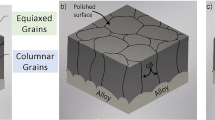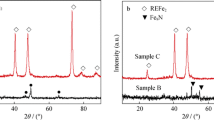Abstract
Fe-Al alloys show interesting physical properties and offer some special industrial applications. There are phase transitions combined with changes in the magnetic behaviour. Another interesting fact is the excellent oxidation and corrosion resistance of iron aluminides even at high temperatures.
Thin Fe-Al layers can be produced in different ways. Ion beam methods are able to produce surface layers on bulk material modifying the initial properties completely. The properties depend strongly on the phase structure induced by the preparation process. 57-Fe Mössbauer spectroscopy, and in the case of surface layers conversion electron Mössbauer spectroscopy, is very suitable to identify this phase structure. In the present work, it is described for Al implanted Fe layers. Depending on implantation dose and energy both magnetic and non-magnetic phases can be produced. Due to the inhomogeneous distribution of Al in the Fe target a layer structure of different phases can be created. Moreover, due to double implantation an Fe-Si-Al alloy can be prepared.
Similar content being viewed by others
References
M. Hansen and K. Anderko, Constitution of Binary Alloys (McGraw-Hill, 1958).
P.A. Flinn and S.L. Ruby, Phys. Rev. 124 (1961) 34.
C.E. Johnson, M.S. Ridout and T.E. Cranshaw, Proc. Phys. Soc. 81 (1963) 1079.
M.B. Stearns, J. Appl. Phys. 35 (1964) 1095.
R. Hergt, E. Wieser, H. Gengnagel and A. Gladun, Phys. Status Solidi 41 (1970) 255.
F. Thimon, G. Marest and N. Moncoffre, Thin Solid Films 237 (1994) 208.
S.C. Deevi and V.K. Sikka, Intermetallics 4 (1996) 357.
D.G. Morris and S. Gunther, Acta Mater. 44 (1996) 2847.
D.G. Morris, D. Peguiron, M. Nazmy and C. Noseda, Mater. Sci. Eng. A 191 (1995) 91.
J.R. Conrad, J.L. Radtke, R.A. Dodd, F.J. Worzala and N.C. Tran, J. Appl. Phys. 62 (1987) 4591.
H. Reuther, Nucl. Instrum. Methods Phys. Res. B 53 (1991) 167.
H. Reuther, O. Nikolov, S. Kruijer, R.A. Brand and W. Keune, Nucl. Instrum. Methods Phys. Res. B 80/81 (1993) 348.
H. Reuther, O. Nikolov, S. Kruijer, R.A. Brand and W. Keune, D. Liljequist, S. Weber and S. Scherrer, Hyperfine Interactions 92 (1994) 1367.
K. Nomura, H. Reuther, E. Richter and Y. Ujihira, J. Radioanal. Nucl. Chem. 190 (1995) 299.
T. Komatsu, Y. Sakemi, K. Shimagami, K. Matusita and M. Miyazaki, J. Mater. Sci.: Mater. Electr. 7 (1996) 101.
Author information
Authors and Affiliations
Rights and permissions
About this article
Cite this article
Reuther, H. Structure, properties and applications of thin Fe--Al layers. Hyperfine Interactions 111, 135–140 (1998). https://doi.org/10.1023/A:1012693314995
Issue Date:
DOI: https://doi.org/10.1023/A:1012693314995




